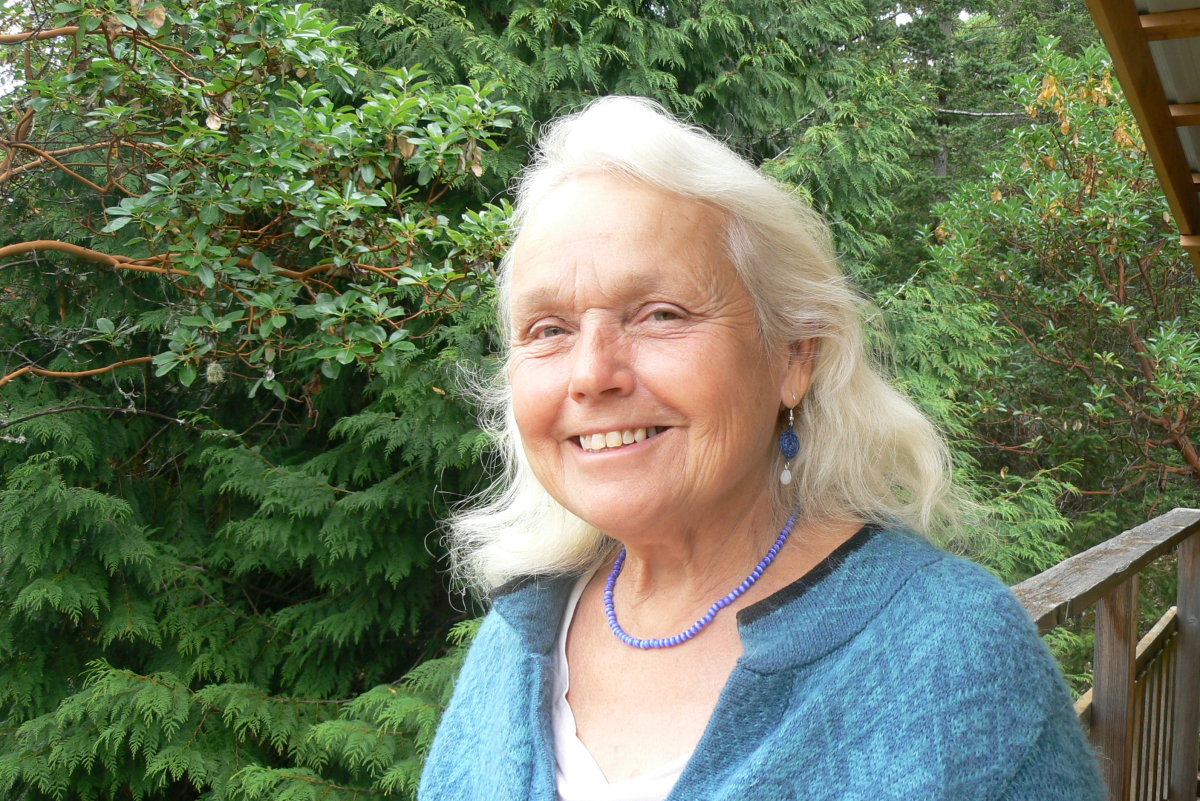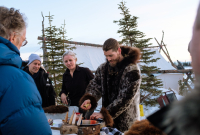Support strong Canadian climate journalism for 2025
Sailing through the waters and winds of the Salish Sea, award-winning author Sheila Harrington sets out in search of the stories of people who define 30 years of conservation movements on British Columbia’s Gulf Islands.
Her new book, Voices for the Islands, uniquely combines her sailing journey and knowledge from a 30-year career in conservation with detailed storytelling of preservation efforts from the islands on the Salish Sea.
“I've sailed around the islands and in this area, …the last 20 years, and I think the most shocking thing was the freighters, all the freighters that are anchored out amongst all the islands. That was very disturbing to see, and of course, for the people of those islands, it has a big impact on their lives,” Harrington said.
She spent three years on the seas of Vancouver Island’s east coast with one year in each island region interviewing between 75 and 100 people along the way.
Log book in hand, she starts year one on the Southern Gulf Islands where she first fell in love with the Salish Sea as a teenager. Working her way through Gabriola, Thetis, North and South Pender, Saturna, Mayne, Galiano and Salt Spring Islands before moving up to the Northern Gulf Islands in year two, and finally, finishing with Bowen, Keats and Gambier Islands in the Howe Sound in year three.
She hopes people will take away a sense they can make a difference, while also providing property owners on these islands with the information to protect the lands themselves.
“Conservation is long term, and benefits people and wildlife and the integrated systems that sustain all life,” Harrington said.
Canada’s National Observer caught up with Harrington from her home on Lasqueti Island.
This interview has been edited for length and clarity.
What was it like sailing through those islands and spending so much time on the water?
I love it. It's my absolute favorite thing to do. And it was really nice to be able to go and meet people on their islands and have them be able to come pick me up and take them to the various conservation lands that they had protected. So, that was great, and I met a lot of new people in addition to the founders. I also interviewed the people that are now taking these organizations forward, and those, of course, were younger people.
Why is immortalizing the stories of these conservationists in years gone by so important for this new generation coming in?
The people who started these organizations did so because of some threats that were going on on the islands, and of course, the whole process of what they went through is helpful information for the new people. In many cases, when I sent the draft chapters to the people I interviewed, including the new executive directors, or the coordinators, the younger people, they all said, ‘Wow, I learned so much. This is fascinating.’ So I got validated. They felt that reading this history, and the stories from these people was really important to them.
What other motivators did you have to write a book chronicling all these stories?
One of them was because people in the world are feeling – and a lot of the people I interviewed share this feeling – hopeless or skeptical about climate change, biodiversity loss, and basically the future of the world. And so what can we do about it? What can individuals do about it? And my second reason for writing the book is I wanted to inspire people to understand that everybody can do something about it, you know, within your own community. And so that was my second reason. And basically, the third reason is to inspire people to conserve more lands, realize what the threats are, and what can be done about it.
There is such a theme in this book of community groups, leaders and various people coming together for a common goal. How important is community to conservation efforts?
Oh, absolutely important. In addition to the small local groups, there's also some larger conservation groups they have to work with. … For example, The Nature Trust of B.C. who I feature, because they've protected a number of properties on the islands, and The Nature Conservancy of Canada, and now the newest player is B.C. Parks Foundation. So, the local groups know what's going on in their communities. They know what's available. They know what is ecologically important, and what is important to the community. And so, oftentimes these groups will work together.
You talk about the tireless efforts of people over the last 30 years who worked hard to save these sensitive ecosystems. Do you think conservationists will need to work just as hard in the next 30 years, or will it get better?
They'll have to work hard, if not harder. You know, with everyone moving here, the threats are just increasing astronomically. We have logging that's continuing to go on, not so much on the islands, but still a little bit. And then, of course, we've got the whole container port increase, and all that infrastructure increase in the Salish Sea that is going to have to be fought even stronger in the future. And then there's all the people coming to development. And so, with all this development, of course, comes more land conversion. And so, we have a goal in Canada and internationally to protect 30 per cent of land and water by 2030. That's only six years away, so the work is ongoing and we need to pick up the pace in order to reach that goal.
You touched on relationships with Indigenous communities, and say there has been a positive progression. How have you seen these relationships evolve in the past 30 years?
It certainly has evolved. It's a whole new world in that regard. I mentioned Pender and Mayne Islands have really made a point of working with the Indigenous communities, … So many groups are working in different ways. I also mentioned that there's now a new Indigenous Land Trust in existence on the Saanich Peninsula. … On top of that, there's the newest thing ITCA, Indigenous Protected and Conserved Areas. Those areas are completely in the hands of the Indigenous people, so that's a whole new world in a way.





Comments